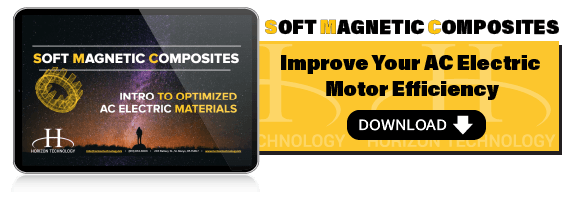At the dawn of the automobile age, the question of propulsion was still very much open. In 1900, manufacturers produced 4,192 vehicles in the United States. Of these, 1,681 were Stanley Steamers, 1,575 were battery powered, and only 936 were internal combustion engines.
The early steam engines were slow-starting, often requiring 10 minutes to build a sufficient head of steam to run. Once running, they were difficult to operate and needed frequent stops to add water.
Their battery-powered kin were range-limited and slow to recharge (sound familiar?). That’s right – electric vehicle (EV) powertrain design was happening at the same time IC was gaining momentum.
Early internal combustion (IC) engines were relatively easy to start and did not have the range issue of battery-powered vehicles. These engines could use either gasoline or alcohol as fuel. By 1914, IC engines dominated automobile production because of continued advances in technology and the building of an infrastructure to support refueling.
Diesel engines have been around since the early 1900s. Their use in cars has seen some dramatic increases, but now is waning. Diesel engines have inherently high torque and better fuel economy, but suffer from high exhaust emission that engineers must address through add-on equipment.
In early powertrain development, manufacturers were worried about pumping out engines, period. It took time before they looked to alternative materials and processes -- like powder metal -- to make those engines better.
Here’s a deeper look at automotive powertrain design’s fascinating past, present, and future. We’ll also learn where powder metallurgy has and will continue to play a part in evolving those designs for the greater good.
Powder Metal’s Entry Into Automotive Powertrain Design
Once the IC engine’s design was defined, engineers shifted focus to making them more reliable and more cost-efficient. That’s where powder metallurgy grabbed a foothold in the industry.
An early example of PM usage in the auto industry was the use of self-lubricating bearing by a division of Chrysler in the late 1930s. Until the early 1950s, there wasn’t a sufficient quantity of powder metal material available to supply the auto motor industry. It took the development of the raw material supply chain to further the growth of powder metallurgy in the automotive industry.
Today, 75% of powder metal’s use is in the automobile. What caused that dramatic growth? Let’s review the development of nonelectric vs. electric vehicle motor design, and where powder metallurgy components may act as a bridge to the future.
From Internal Combustion to Electric Vehicles
Internal Combustion: The Most Practical
Why did designers go with internal combustion in the automobile’s early days? They were looking for a way to propel a wheeled contraption as easily as possible. Gas became the preferable option over alcohol, corn, and so on because it was easier to make.
Fast-forward to the present day, and internal combustion engines still dominate the automobile industry. But is a rewind back to electrification beginning to occur in automotive powertrain design? Some of the early problems of range and slow charging still exist, but engineers are addressing and improving them rapidly.
Where PM fits in: Powder metallurgy has been the source for a wide variety of components in IC engines for several decades. These include connecting rods, main bearing caps, variable valve timing stators and rotors, valve guides, and oil pump gears.
Diesel: Increased Vehicle Efficiency
Gas may have been the most obvious choice for internal combustion engines. But in the 1970s and into the 1990s, diesel took off as well.
Diesel engines were relatively inexpensive to operate and quite reliable. They were also capable of generating serious torque and power for hauling heavy loads. This remains their #1 use today.
It’s easy to see -- and smell -- that the problem with diesel is the air pollution it produces. Regulators started taking automobile emissions seriously during the same period diesel grew to prominence. Standards have only become stricter in:
- California
- Europe
- Asia
Where PM fits in: Powder metallurgy is fairly common in engine valves for diesel engines. For years, designers have created more efficient and powerful diesel engine components with PM.
Hybrid Vehicles: Bringing Together Electric & Gas
Around the turn of the millennium, electricity became the next big thing in auto powertrain design – but battery life was a concern.
Hybrids came to the rescue. They offered the efficiency of electricity, but without the battery life issues.
Where PM fits in: As car companies began to electrify drive trains, powder metallurgy faced potential lost opportunities as IC engines got smaller or were eliminated. However, PM has not stood still; it’s actually responded with improved sintered materials and the development of a new class of magnetic material (soft magnetic composites).
Together these two opportunities cast a still-optimistic future for PM in the form of lighter, more customized parts to address size, shape, and weight challenges.
Full Electric Vehicles: The Ideal Combo
Electric vehicle motor design was developing concurrently to IC design well over 100 years ago. It lost the popularity contest because of practical considerations.
The development of better batteries -- much of which can be attributed to Tesla and other battery and car companies' powertrain design and ongoing investment in battery tech -- to produce EV designs that could hold up against the best IC and other types had to offer.
Where PM fits in: Powder metallurgy is a production process that’s brimming with potential for EV motors because you can adapt it to increasingly sophisticated design and material needs. These go beyond the standard cost-reduction features inherent to the powder metallurgy process.
Are your designs being limited in shape, performance, or flexibility? PM has several material groups specifically created to address increasingly complex designs, especially those incorporating 3D flux paths. A good example is an axial flux motor.
The Future of Electric Vehicle Design
Automotive drivetrain design has come a long way from its crude beginnings. The goals of the design process have remained fairly consistent -- increasing efficiency, gaining mileage, minimizing air pollution, and so on. But the way designers have addressed these challenges has shifted through the last century and well into the 2000s.
The reason the tractor-trailer looks like it does today is that 50% of energy used to fuel that truck is for dissipation of energy. If you plop diesel into a traditionally gasoline-based application, no big deal. But with an electric engine, you can completely redesign the semi -- see the Tesla or Nikola proposal.
There’s no doubt: Modern e-drives are the future. That’s why manufacturers and developers must commit to further optimizing electric drive units, tweaking everything from torque and power density to efficiency, weight, and -- above all -- production costs. The inherent cost-effectiveness of powder metal parts will certainly earn it a spot in that race.



